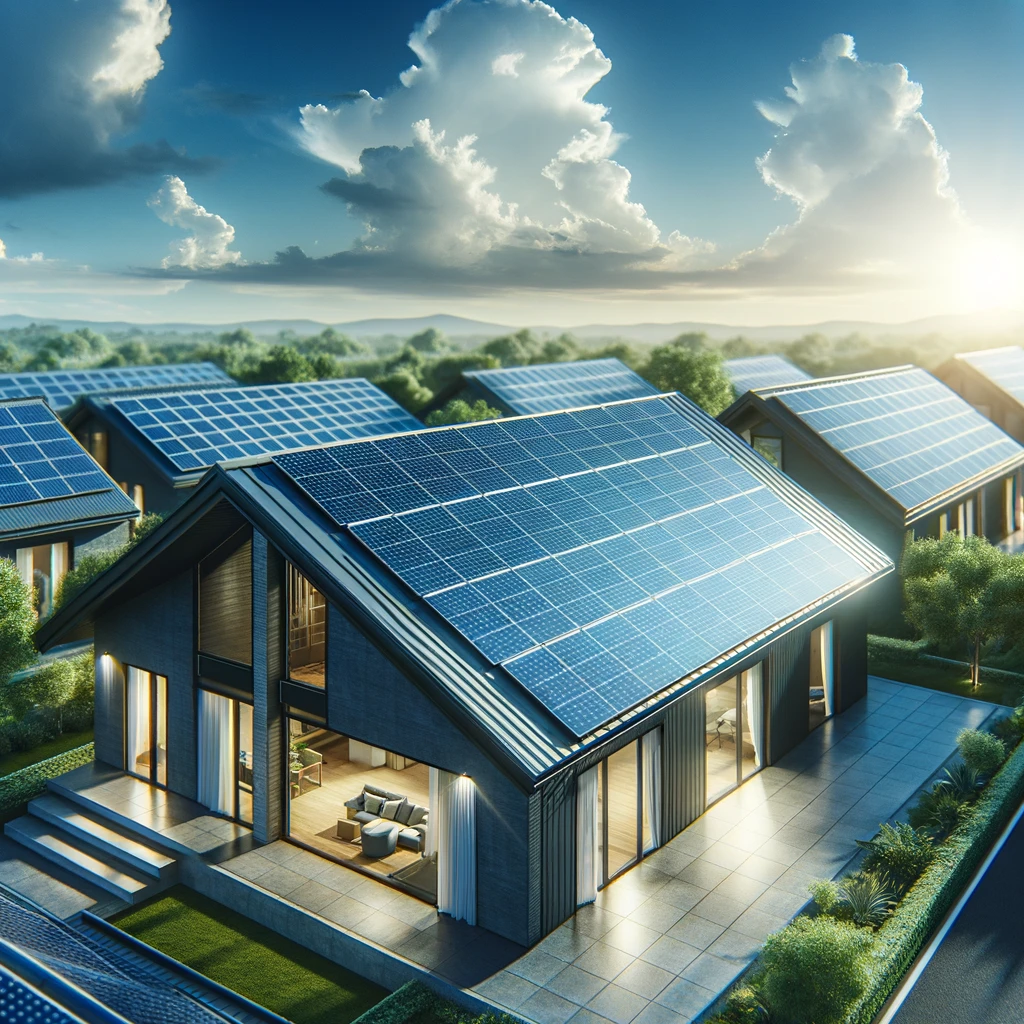In an era where sustainability is not just a buzzword but a necessary shift, solar energy has emerged as a beacon of hope. Solar panels, devices that convert sunlight into electricity, have become synonymous with this green revolution. They offer a renewable, clean energy source that reduces carbon footprint and electricity bills. If you’re considering making the switch to solar, understanding the process of solar panel installation and how to find the right service provider near you is crucial. This comprehensive guide aims to shed light on every aspect of solar panel installation, paving the way for a more sustainable future.

The Solar Shift: Why Go Solar?
Solar power is more than just an eco-friendly alternative; it’s a smart, long-term investment. Here are compelling reasons to consider solar panel installation:
- Reduced Electricity Bills: Solar panels significantly reduce, if not eliminate, your electricity bills. Any excess power generated can be sold back to the grid, earning you credits in return.
- Environmental Impact: Solar energy reduces reliance on fossil fuels, cutting down greenhouse gas emissions and contributing to a healthier planet.
- Increased Property Value: Homes with solar panel installations often see a rise in property value, making it an attractive feature for future buyers.
- Energy Independence: By generating your own electricity, you become less dependent on utility companies and unaffected by rising energy costs.
Understanding Solar Panel Installation
Solar panel installation is a complex process that involves several steps, from site assessment to the actual installation and grid connection. Here’s a breakdown of the process:
Initial Consultation
The journey begins with a consultation, where a solar provider assesses your energy needs, reviews your property’s solar potential, and discusses your financial options.
Site Assessment
A thorough site assessment follows, examining your roof’s condition, orientation, and shading, to design an optimal solar energy system for your home.
Design and Permits
Using the site assessment data, a customized solar system design is created. The provider then handles the necessary permits and paperwork required by local authorities and utility companies.
Installation
Professional installers will mount the solar panels on your roof, connect them to an inverter (which converts solar power into usable electricity), and integrate the system with your home’s electrical and the grid.
Inspection and Activation
After installation, the system undergoes inspections by local authorities and the utility company. Once approved, it’s activated, and you begin generating your own clean, renewable energy.
Selecting a Solar Panel Installation Service
Choosing the right solar panel installation service is pivotal. Here are tips to help you find a reputable provider:
Research and Referrals
Start with online research and ask for referrals from friends or family who’ve gone solar. Look for companies with good reviews and a solid track record.
Check Credentials
Ensure the company is licensed, insured, and certified. Look for certifications from the North American Board of Certified Energy Practitioners (NABCEP), a mark of professionalism and expertise in the solar industry.
Experience Matters
Consider the company’s experience, especially with installations similar to what you need. Ask to see their portfolio and inquire about their team’s expertise.
Warranties and Guarantees
Understand the warranties and performance guarantees offered on both the equipment and the installation work. These can protect your investment and provide peace of mind.
Financial Options
Discuss financing options. Many companies offer leasing, loans, or Power Purchase Agreements (PPAs), each with its own benefits and considerations.
Preparing for Installation
Preparation can streamline the installation process. Ensure your roof is in good condition, trim any shading trees if necessary, and discuss any concerns with your installer beforehand.
The Impact of Going Solar
The benefits of installing solar panels extend beyond immediate financial savings and environmental contributions. They represent a commitment to a sustainable lifestyle, promoting renewable energy adoption and leading by example in the community.
Conclusion
Solar panel installation is a significant step towards energy independence and environmental stewardship. By choosing the right installation service and understanding the process, you’re not just installing panels on your roof; you’re investing in the future of the planet. As solar technology continues to advance and become more accessible, there’s never been a better time to explore solar energy for your home. Embrace the power of the sun, and let it illuminate the path to a greener, more sustainable world.




